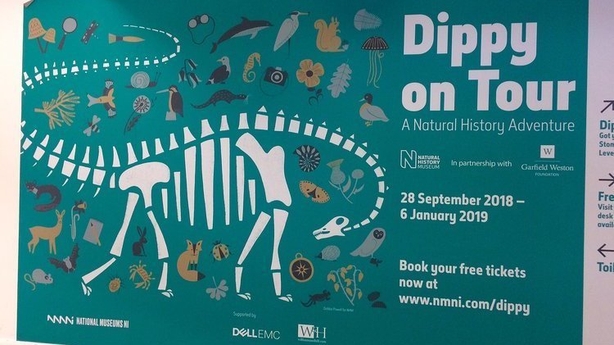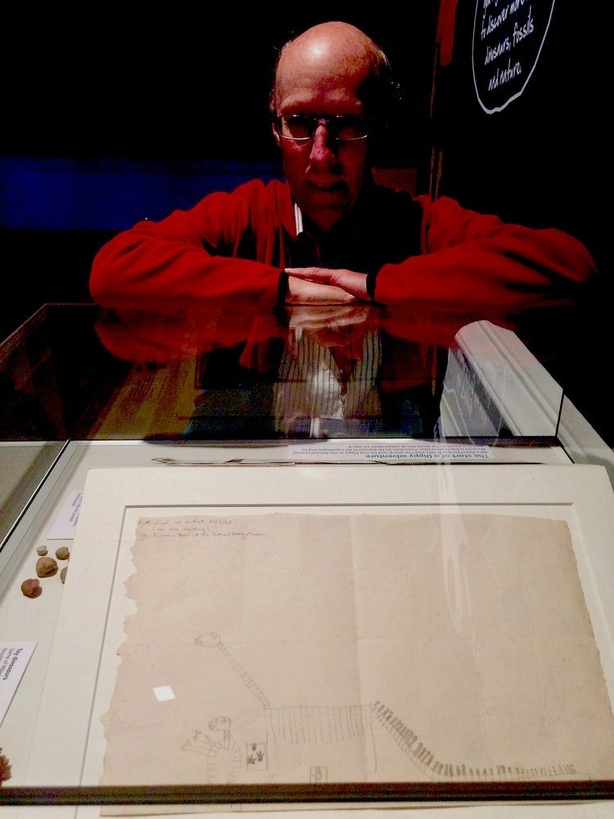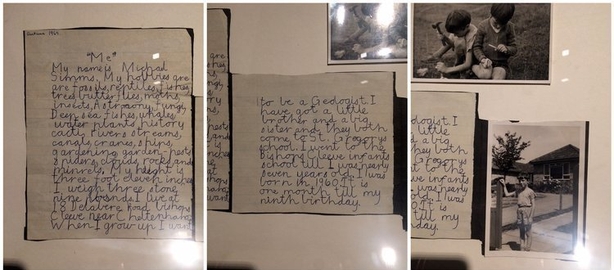Last night on Mooney Goes Wild, we welcomed a very special visitor to the island of Ireland.
Towards the end of the Jurassic period, about 150 million years ago, the Diplodocus still roamed the earth. Thanks to the plentiful supply of vegetation, these huge sauropods were able to thrive and evolve into some of the largest animals the planet has ever known - along with fellow plant-eaters the Apatosaurus and the Brachiosaurus.
The Diplodocus will be familiar to most dinosaur-lovers. With its long neck and tail, small head and four massive limbs, its skeletal structure has been likened to the shape of a modern day suspension bridge.

Despite becoming extinct more than a hundred million years ago, the diplodocus, arguably the world’s most popular dinosaur, has arrived at the Ulster Museum in Belfast. The exhibition, entitled Dippy On Tour - A Natural History Adventure, features the British Natural History Museum’s 26-metre long cast of the fossilized bones of a Diplodocus, which was found by rail workers in the USA in 1898.

The Natural History Museum's iconic 26-metre long Diplodocus cast arrives in Northern Ireland fresh from Birmingham where a staggering figure of more than 250,000 visitors came to see him.
His Belfast visit will be the only chance to see Dippy on the island of Ireland so, of course, Derek and Dr. Richard Collins simply had to visit. There, they met up with Curator of Palaeontology Dr Mike Simms - a long-time admirer of Dippy...

Dippy, a plaster cast of the fossilised bones of a Diplodocus found by railroad workers in Wyoming, USA in 1898, took a full week to build by a team of four technicians and two conservators from the Natural History Museum.
At the Ulster Museum, he will sit within an exhibition which explores the uniqueness of our natural world and biodiversity across the island of Ireland, and visitors can discover why so few dinosaur fossils have ever been found here.
Kathryn Thomson, Chief Executive of National Museums NI, said:
"Dippy is finally here and we can’t wait for visitors to meet him. We’re thrilled to be the only venue in Ireland to be hosting the iconic dinosaur and we hope that after seeing Dippy visitors are inspired to explore, discover and protect the world the amazing nature on our doorstep.
"Dippy starts a vital conversation about the importance of understanding and caring for our natural world and it’s great to make the connection with our own unique and extensive natural science collections, some of which will sit alongside him."
- Words by Sinead Renshaw
To make a booking and for further information on the exhibition and associated events, visit www.nmni.com/dippy.
You can listen back to the programme above and tune into Mooney Goes Wild every Monday, 10pm-11pm on RTÉ Radio 1. For more information on the show, click here and follow @NatureRTE on Twitter and facebook.com/rtenature on Facebook.

